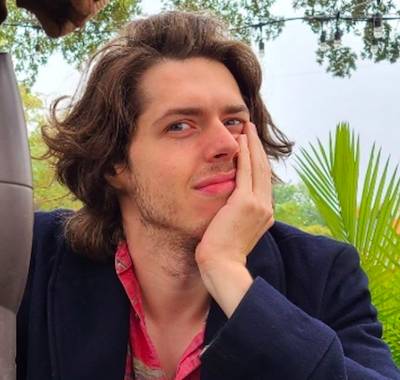“John Wick: Chapter 4” Editor Nathan Orloff on Cutting Chaos Into Crackling Coherence
Editor Nathan Orloff is the man who helped turn the mayhem in John Wick: Chapter Four into a beautiful, brutal ballet. It is the longest entry in the franchise, yet it moves with the grace and precision of a seasoned dancer. It’s not only an epic because of director Chad Stahelski’s action sequences; it’s the patient character moments that make all that action meaningful.
Take, for instance, the relationship between Akira (Rina Sawayama) and her father, Shimazu (Hiroyuki Sanada). Without their more personal, less plot-driven exchanges, the action in Osaka would have suffered. “We talked about cutting that for time,” Orloff said. “We had a lot of people that wanted the movie to be a lot shorter. There are moments like that you don’t technically need, but you’d care less about Shimazu and Akira. Those scenes are absolutely essential to making the emotionality of the film functional.”
Recently, Orloff took us behind the scenes of how he cut John Wick: Chapter Four so that it’s grand, acrobatically brutal set pieces also felt personal.
When you have all these moving pieces in a nearly three-hour film, where do you even start?
It’s taking a comb to the desert. You just go from the top, work it, and compress. I did a pass to make sure that in any dialogue scene, no one repeated an idea because there is a tendency to do that with writing. I tried to remove it anytime someone said something twice. I wanted to be ruthless for the audience, so they better catch everything.
And then your next passes?
With the other passes, sometimes it was hard because of incomplete visual effects to judge whether a stunt would work or this car hit would work. It wasn’t until we had some rough, like PlayStation two animatics, put into the Arc de Triomphe scene. It was then like, “Oh, if this is an A+ stunt and this is an A- stunt, and maybe that’s a B, maybe we get rid of the B.” You’re trying to sift out the stuff that’s not quite as great as everything else. And so, when you watch a movie over and over again, you’re raising the bar in terms of when do you feel drowsy? You’re making each scene sing as much as it possibly can.
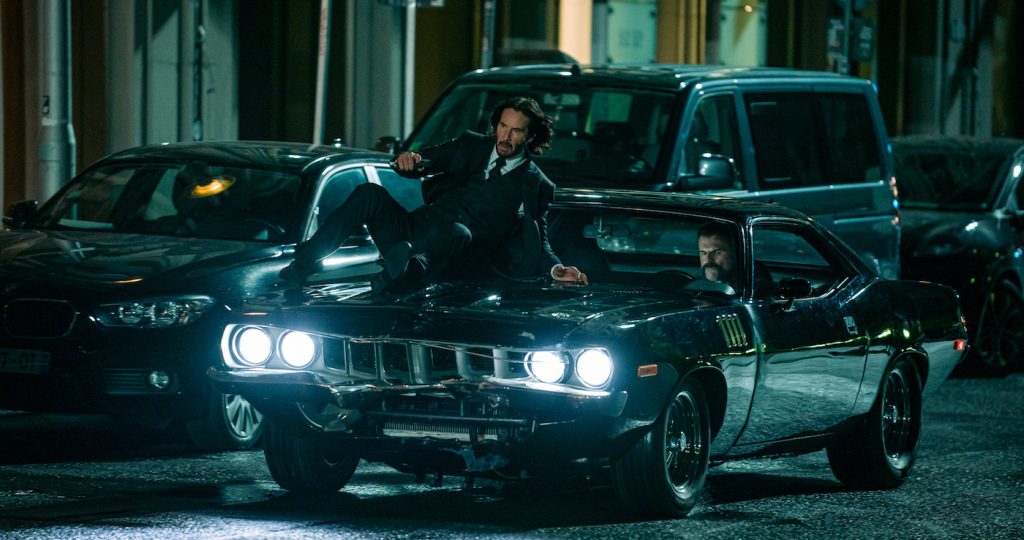
How much did the pace that editor Evan Schiff established with the previous Wick films influence you?
I definitely watched all three again right before coming on. So, I remember the first day of shooting was in Berlin. It was John walking across the bridge. I was like, “Oh, here we go. This is typical; it’s John’s walking and on a mission.” I put the music over it, and it was very, very John Wick. But my favorite experience with this movie is that slowly, over time, I stopped doing what I thought a John Wick movie would do and started doing what was best for this film. Those two in the Venn diagram, there is a 98% overlap, but there was this area where I was able to explore what was a little weirder in some cases.
Can you describe one of those cases?
Chad will talk about his Barry Lyndon scene in front of the Eiffel Tower, where everyone’s static in the background, and we have this duel at the end; it’s so Good, the Bad, and the Ugly. John Wick hadn’t done those sorts of scenes, so we had to go outside the territory of what John Wick films would do. I filled it in with what we wanted and what I wanted.
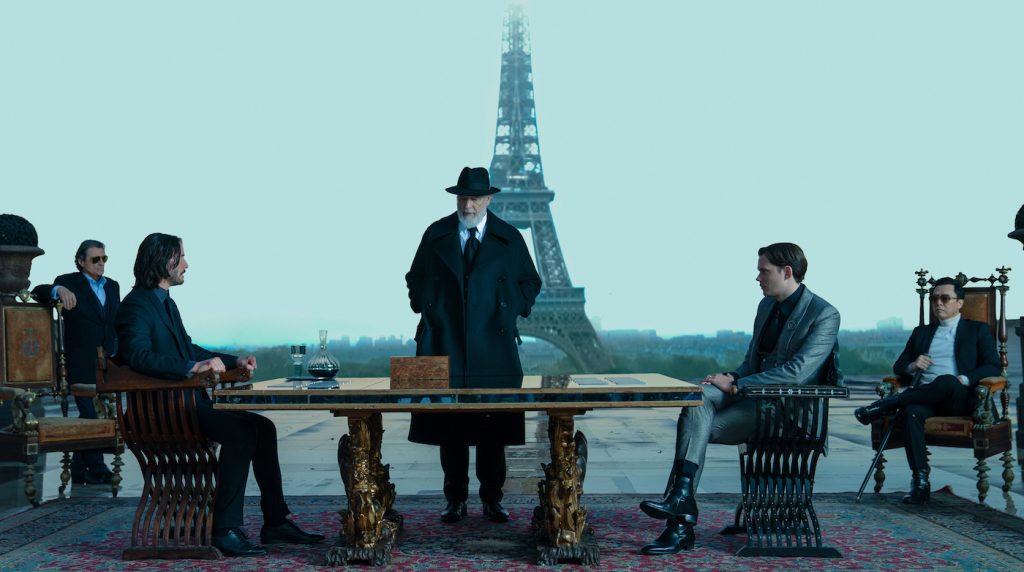
The duel was epic.
The duel was just one of the most creative and inspirational sequences I’ve ever cut. I had to figure out how to make each shot feel different, how to make each hit work, and how to try to accomplish the fake out, even if the audience knew it was coming. It was so much fun because, obviously, it strays well outside what has been done before in the series.
We also haven’t seen that repeated fall down the stairwell before. How’d you want to emphasize the repetition, as well as the physical comedy, there?
When I got the job, Chad imparted to me a bunch of different film influences. Some are Westerns, like the Man With No Name trilogy, Kurosawa films, and even Hollywood Old School musicals, like Singing in the Rain. One of the larger ones was Buster Keaton. We take so much influence from him with physical comedy. A part of the interesting thing about John Wick as a series is they’re hyper-violent in a lot of ways, but especially in this film, the blood is kind of misty, and with a few exceptions, it’s not grotesque; it’s like an adult Looney Tunes. And so, that’s where this Buster Keaton element comes in.
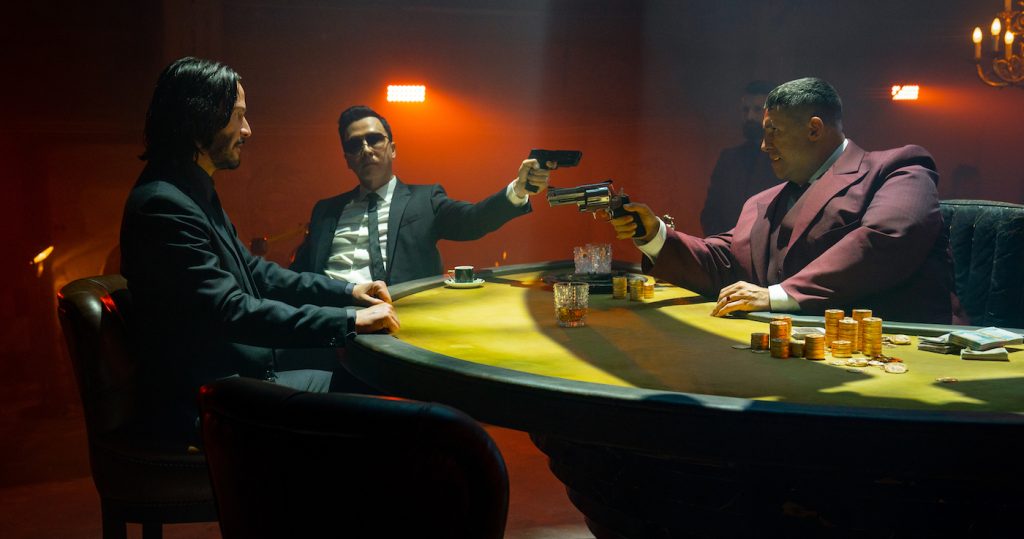
And the stair fall?
The stair fall was a fun opportunity, especially the second one. Everyone’s like, “Oh, he fell down the stairs. I can’t believe he had to go that far.” And then when he falls the second time, you’re like, “Oh my God.” We did this funny thing in sound design that made me so happy where it’s loud and fun and then gets quieter and quieter, and there’s more reverb and echo. It’s like Wile E. Coyote and Looney Tunes. I found that if you laughed, you bought that he was alive. If we were playing everything as dramatic and super serious, you’d be like, “Oh, he’s dead.” He can’t jump out of a three-story window, hit a van, and be alive if we took it a hundred percent seriously. It has to be a punchline.
Did you find yourself editing differently for each of the characters? Say for Akia (Rina Sawayama) or Kane (Donnie Yen) in the Osaka sequence, how’d you approach cutting their fight scenes differently from John Wick?
It’s like I had different brains when I cut them. Rina was a little more straightforward. I was just making it cool and threatening. I did something with Rina where I kept cutting a few frames behind or ahead where I normally would because it was like she was trying to keep up, especially with the knife. She was always barely making it.
With Keanu, I found the influence of “Singing in the Rain” and these old-school musicals where you’re cutting around the dancing. You’re not editing to emphasize the dancing, and it’s never editing on a punch. It’s punch, hit, as he reacts or slide, cut, move, next move. You’re doing it in between these beats.
And Donnie Yen’s blind character, Caine?
Donnie was a different beast. With the kitchen scenes, it was more pure fun, and I cut that as straightforward as it wanted to be. I also tried to just show how he was doing these things. I made this decision early on that stuck: when Donnie is fighting another main character, there’s no music. I wanted everyone to hear what Kane hears. I wanted people to hear that this is doable. It created this eeriness around Kane where he felt different than all the other characters. When there was this music, music, music, and the nunchucks, and then John gets up, there’s no music, and then Kane shows up; it’s just eerily quiet. To me, that is Kane’s world. We get an insight into his world because of that sound design choice.
Chad does not shoot traditional coverage and uses maybe two or three cameras at a time. What challenges does that give you?
When I first landed in Berlin, they went and shot the exhibition hall, which is the sequence with the Nunchucks. Chad shoots linearly. They shoot, and they sort of figure out how everything links together as they go. With that scene, I landed, I’m still jet-lagged, and I’m starting to cut the scene together, and I’m like, “What? How do I link this?” The coverage is shooting at the characters. It’s almost like a theater in terms of its presentation, which is very Buster Keaton and Singing in the Rain, where your camera is your best seat in the theater. What was important in cutting is the links between shots, the overlap of, okay, they’re finishing this action, so how much overlap in the next setup? When do I cut? How do I cut? How do I make that smooth? How do I make that effortless? So, Chad had an AVID in LA when we got back. He never edited anything himself. He would look at dailies, and there were times where, like in the exhibition hall, we would come back, and he’d be like, “That was the only way to put that together.” (Laughs) Once you crack it, that’s it.
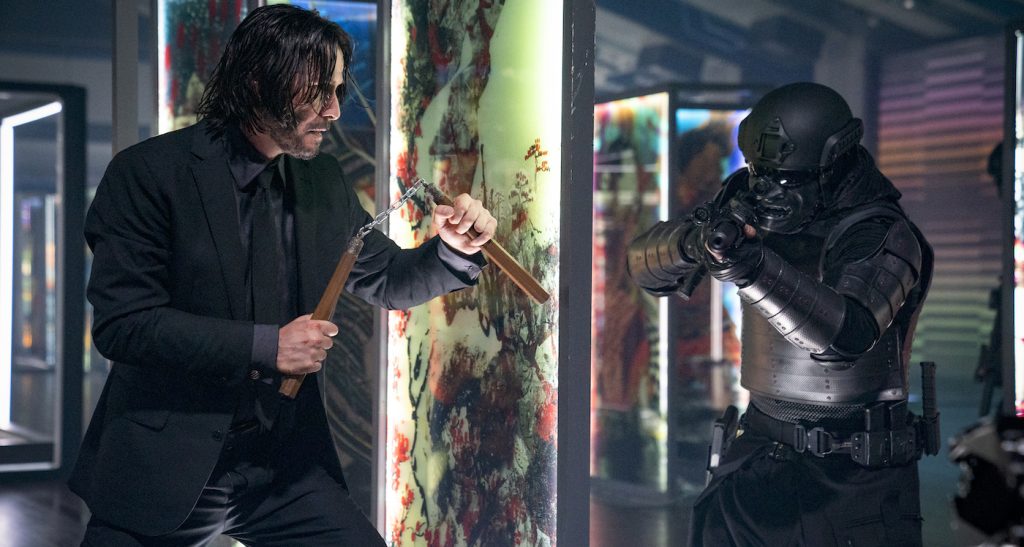
On set, what other moments made you pause and think, how on Earth is this going to cut together?
The Arc de Triomphe. I was standing on this tarmac in an abandoned airport in Berlin, the Tegel Airport. They had these cones out for lanes and these weird-looking sleds with fake headlights for cars and pads on them. They were hitting these stuntmen. They told me they’re going to replace everything. I was like, “What do you mean we’re gonna replace everything?” It was so bananas. The geography of that was difficult because I didn’t have a background. I didn’t have an Arc. I’m obsessive about clarity in my editing. I believe you should be able to explain to a blind child every shot. Every shot is one sentence. Otherwise, random stuff is just happening. You need to be able to explain the narrative of an action scene simply in your mind. Geography and clarity are paramount. And when cutting that scene, and there’s no background, I couldn’t tell where any direction was. It was incredibly challenging. It was something that took a year to solidify. It was crazy. We were making changes to that sequence up until January.
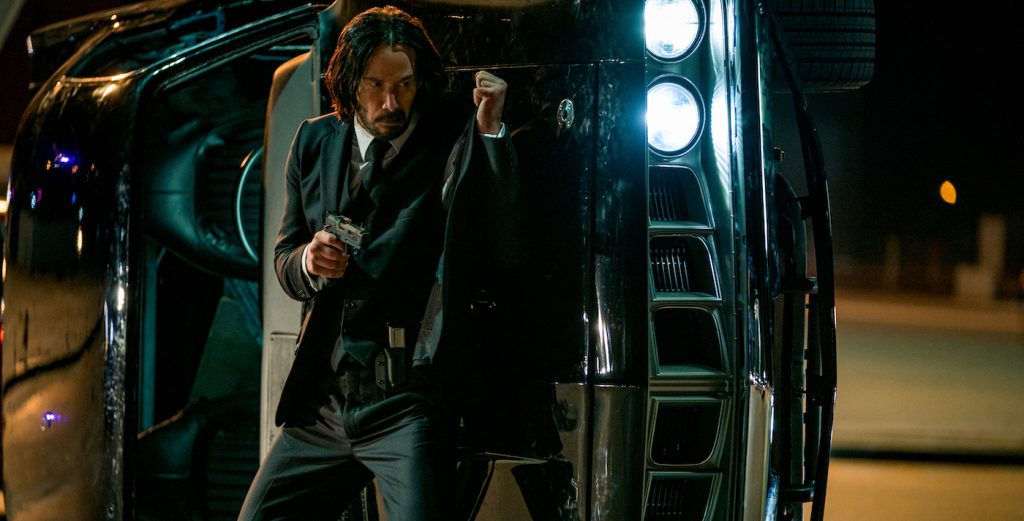
John Wick: Chapter 4 is in theaters now.
For more on the John Wick franchise, check out these stories:
“John Wick: Chapter 4” Stunt Coordinators on How They Crafted the Craziest “Wick” Yet
“John Wick: Chapter 4” Director Chad Stahelski on Why Wick’s a Villain Trying to Do Right
Featured image: Keanu Reeves as John Wick in John Wick: Chapter 4. Photo Credit: Murray Close


